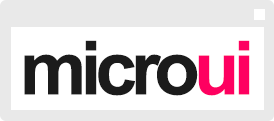A tiny, portable, immediate-mode UI library written in ANSI C
- Tiny: around
1100 slocof ANSI C - Works within a fixed-sized memory region: no additional memory is allocated
- Built-in controls: window, scrollable panel, button, slider, textbox, label, checkbox, wordwrapped text
- Works with any rendering system that can draw rectangles and text
- Designed to allow the user to easily add custom controls
- Simple layout system
if (mu_begin_window(ctx, "My Window", mu_rect(10, 10, 140, 86))) {
mu_layout_row(ctx, 2, (int[]) { 60, -1 }, 0);
mu_label(ctx, "First:");
if (mu_button(ctx, "Button1")) {
printf("Button1 pressed\n");
}
mu_label(ctx, "Second:");
if (mu_button(ctx, "Button2")) {
mu_open_popup(ctx, "My Popup");
}
if (mu_begin_popup(ctx, "My Popup")) {
mu_label(ctx, "Hello world!");
mu_end_popup(ctx);
}
mu_end_window(ctx);
}- See
doc/usage.mdfor usage instructions - See the
demodirectory for a usage example
The library expects the user to provide input and handle the resultant drawing commands, it does not do any drawing itself.
The library is designed to be lightweight, providing a foundation to which you can easily add custom controls and UI elements; pull requests adding additional features will likely not be merged. Bug reports are welcome.
This library is free software; you can redistribute it and/or modify it under the terms of the MIT license. See LICENSE for details.











